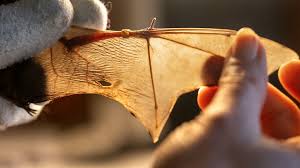Cornell Study Reveals Coupled Evolution of Bats' Wings and Legs

Recent research from Cornell University has uncovered surprising insights into the evolution of bats, revealing that, unlike birds, the development of bats' wings and legs is closely intertwined. This evolutionary coupling may have hindered bats from occupying as many ecological niches as their avian counterparts.
Andrew Orkney, a postdoctoral researcher in Brandon Hedrick's lab, expressed surprise at the findings, stating, "We initially expected to confirm that bat evolution is similar to that of birds, and that their wings and legs evolve independently of one another. The fact we found the opposite was greatly surprising."
The study, published on November 1 in *Nature Ecology and Evolution*, challenges the long-held belief that the independent evolution of forelimbs and hindlimbs was essential for the origin of flight in vertebrates. Since legs and wings perform distinct functions, researchers had assumed that this independence would allow for greater adaptability to their specific roles.
By comparing bats and birds—two groups that do not share a common flying ancestor—the researchers could effectively test this hypothesis. They found that within each species, the shapes of bones in the wings (including the handwing, radius, and humerus) or the legs (like the femur and tibia) evolve together, showing strong correlations. However, a stark contrast emerged when examining the correlation between legs and wings: bird species exhibited little to no correlation, while bats displayed a significant correlation.
This means that, unlike birds, bats’ forelimbs and hindlimbs did not evolve independently. Instead, changes in wing shape—whether an increase or decrease—were accompanied by corresponding changes in leg shape. As Hedrick notes, "We suggest that the coupled evolution of wing and leg limits bats' capability to adapt to new ecologies."
Following this discovery, the research team plans to delve deeper into the evolution of bird skeletons. Orkney commented, "While we showed that the evolution of birds' wings and legs is independent, and it appears this is an important explanation for their evolutionary success, we still don't know why birds are able to do this or when it began to occur in their evolutionary history."
Story Source:
Materials provided by Cornell University. The original text of this story is licensed under a Creative Commons License. Note: Content may be edited for style and length.
Journal Reference:
- Andrew Orkney, David B. Boerma, Brandon P. Hedrick. Evolutionary integration of forelimb and hindlimb proportions within the bat wing membrane inhibits ecological adaptation. Nature Ecology & Evolution, 2024; DOI: 10.1038/s41559-024-02572-9

0 Comments